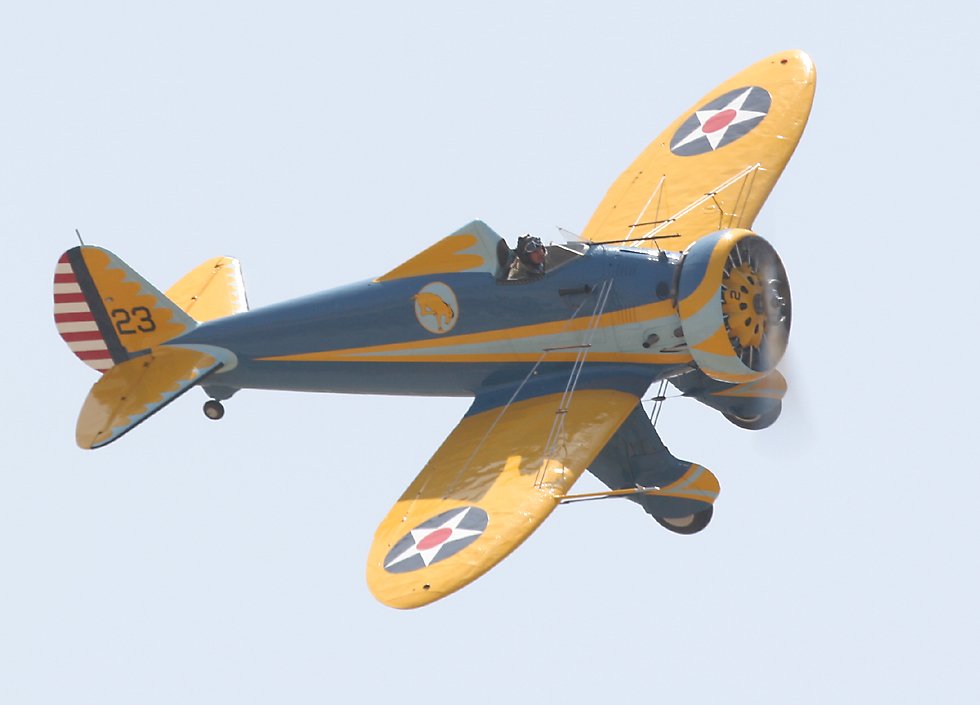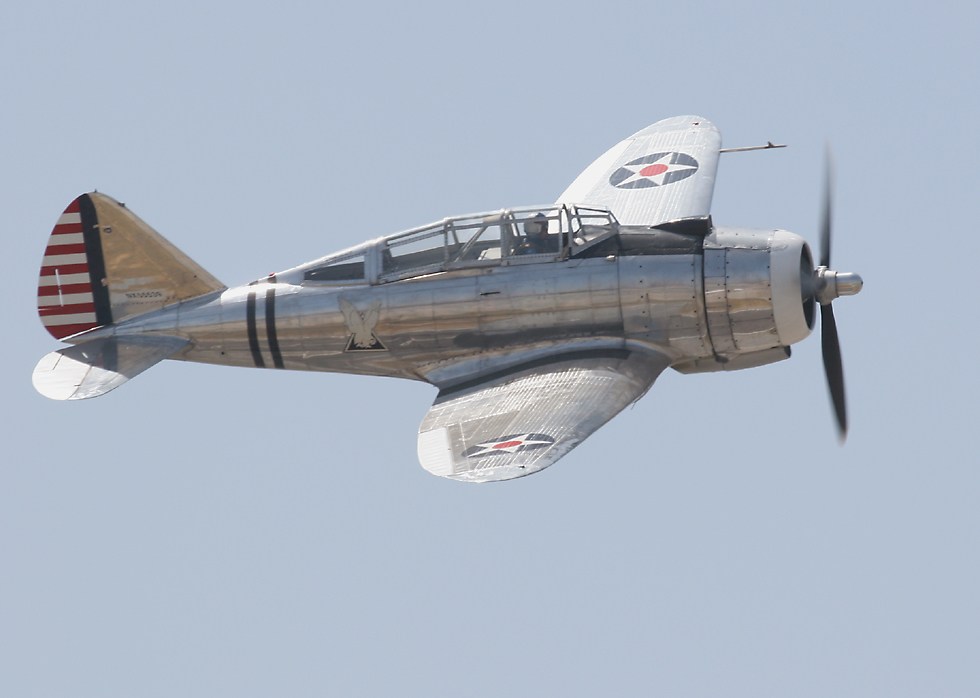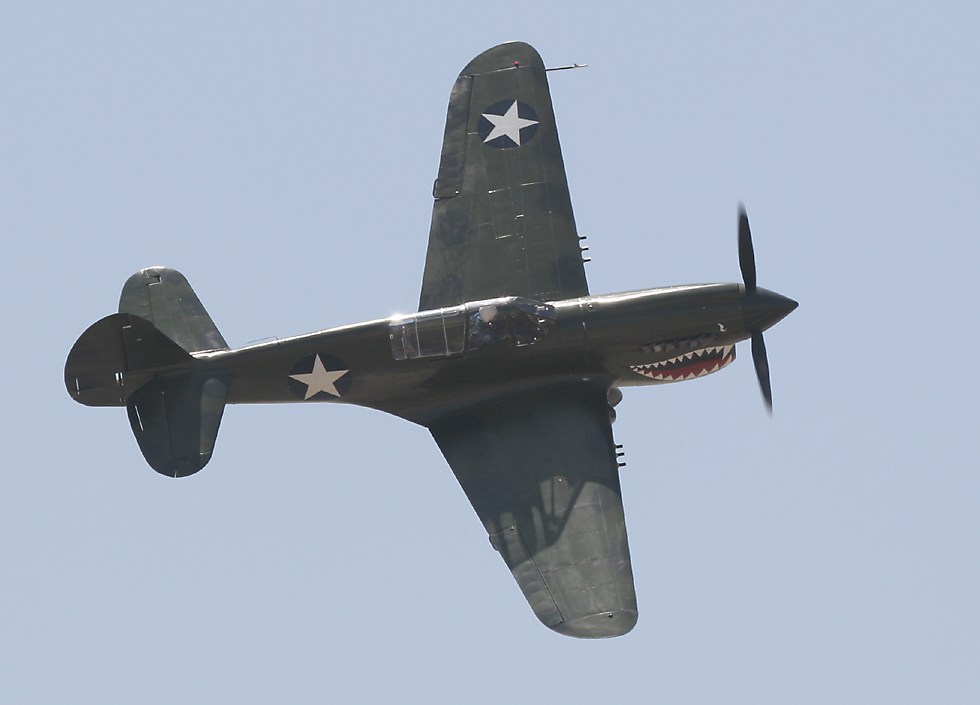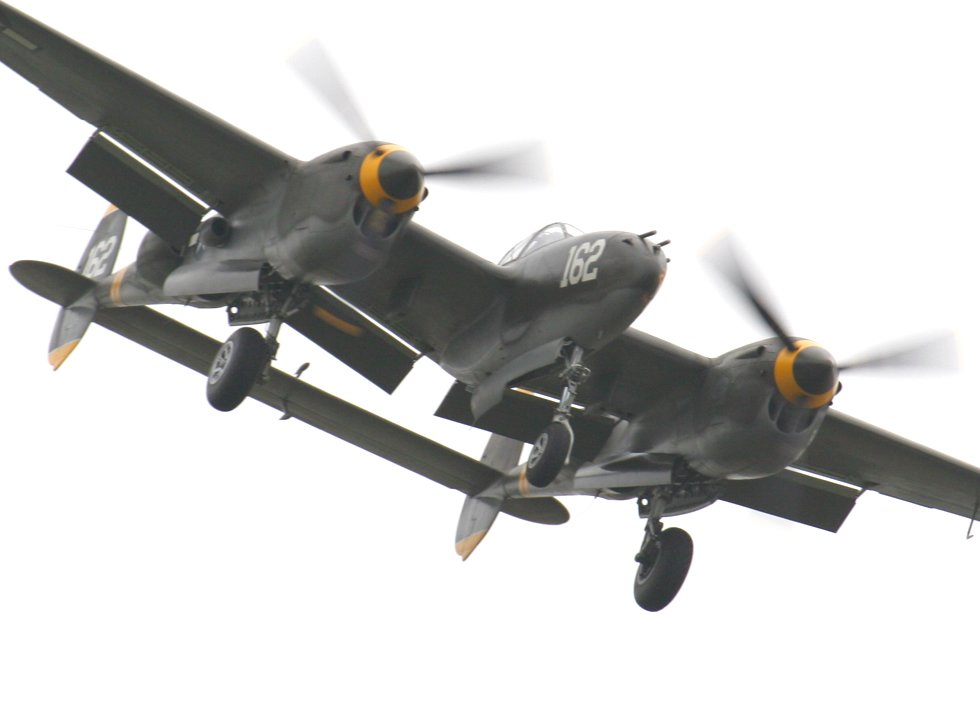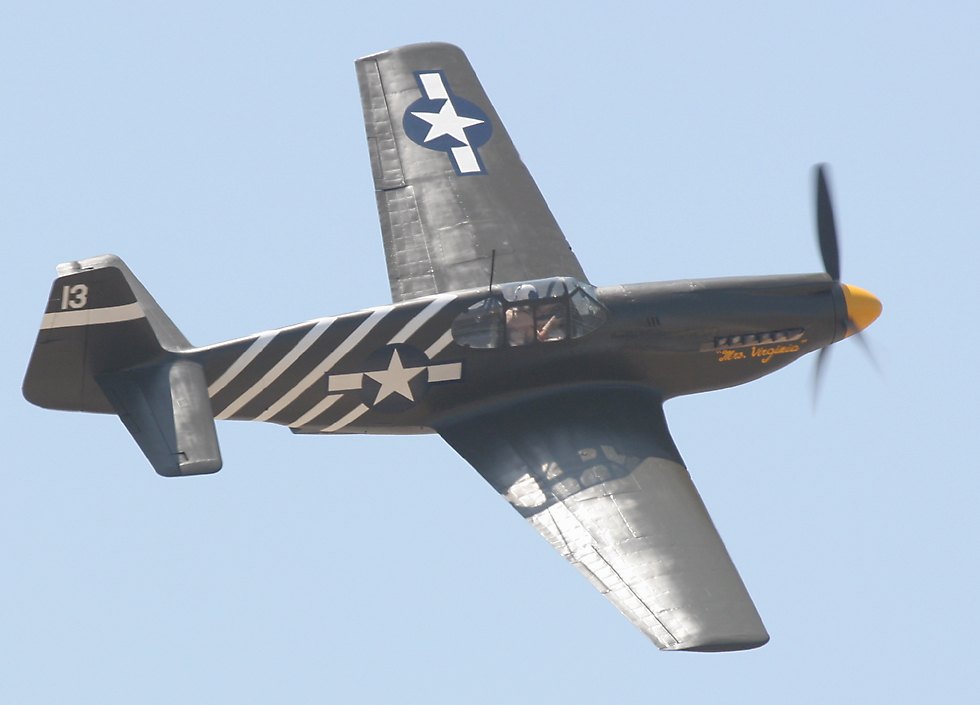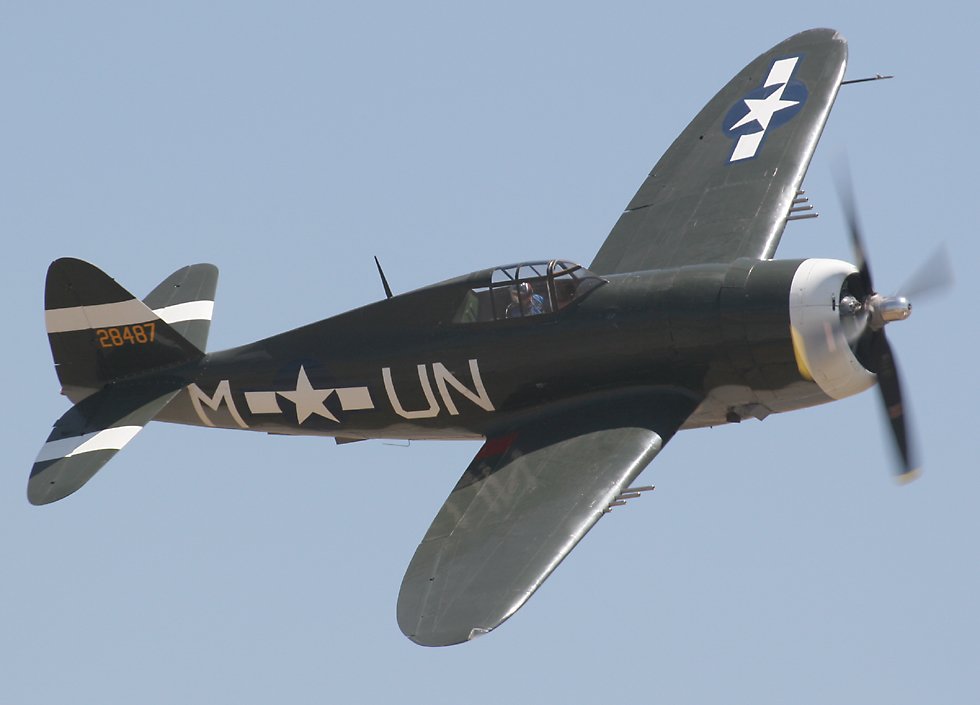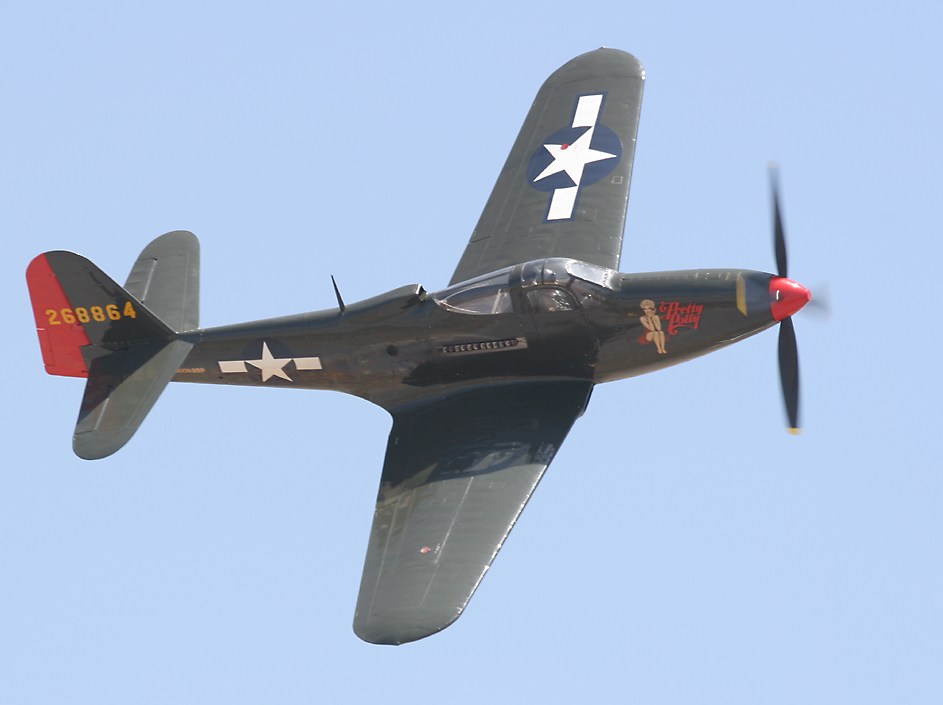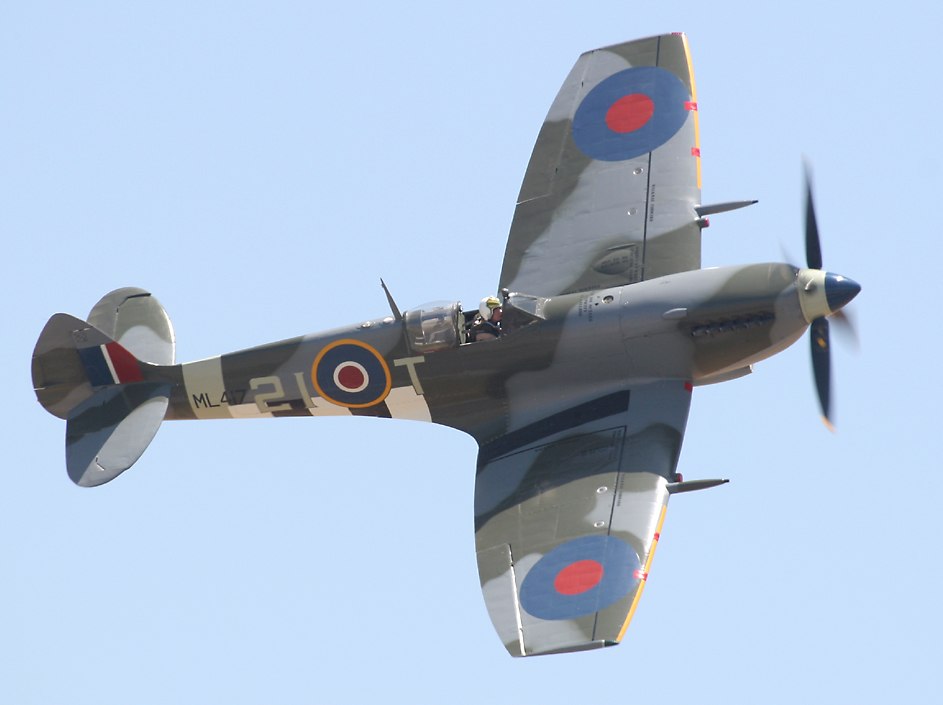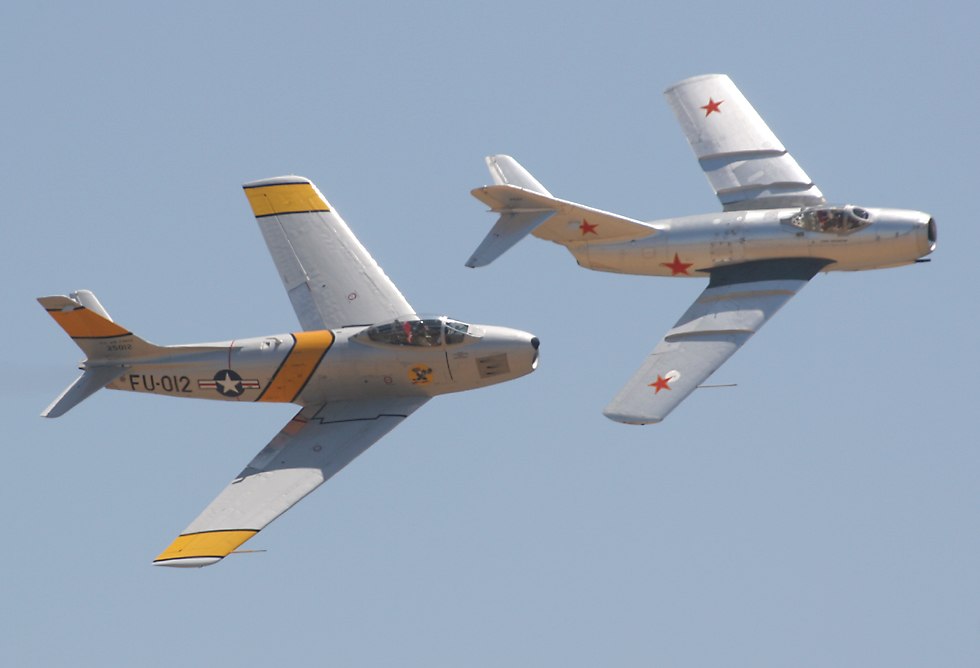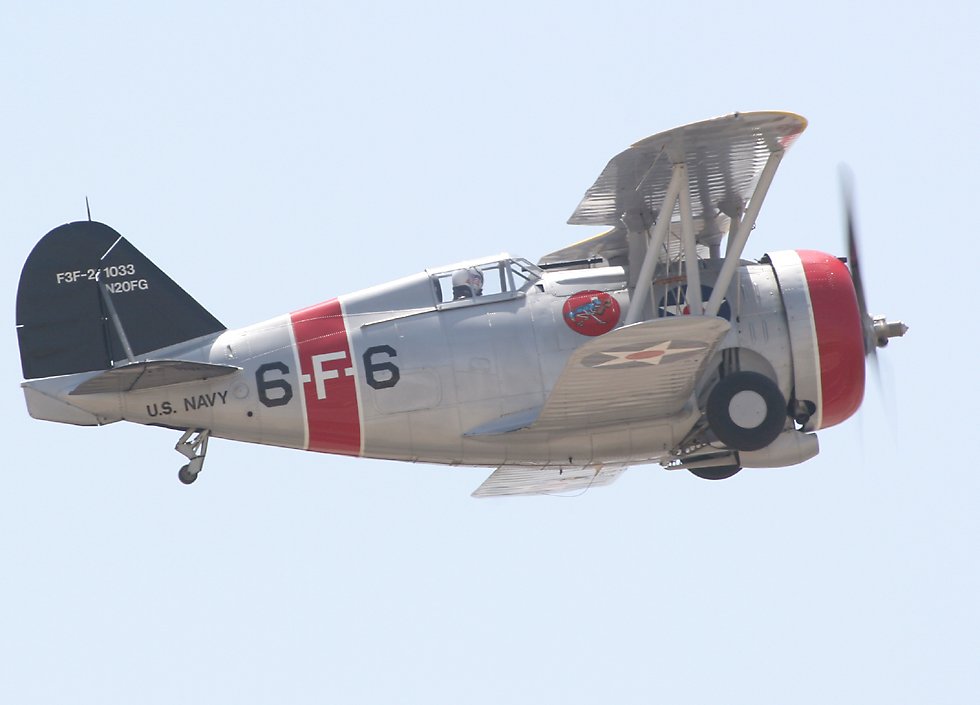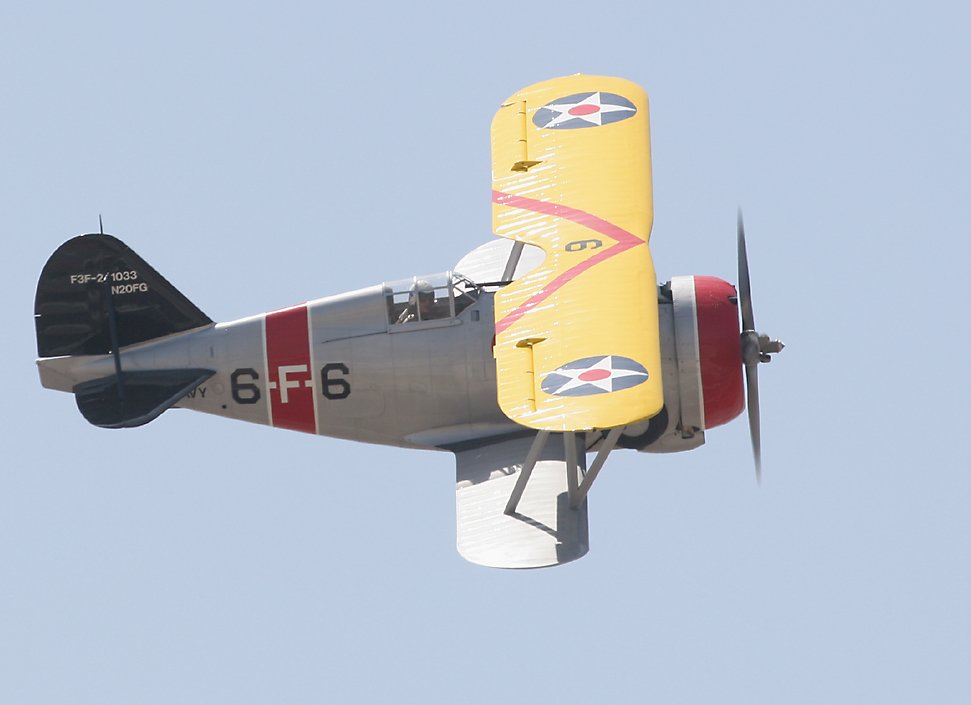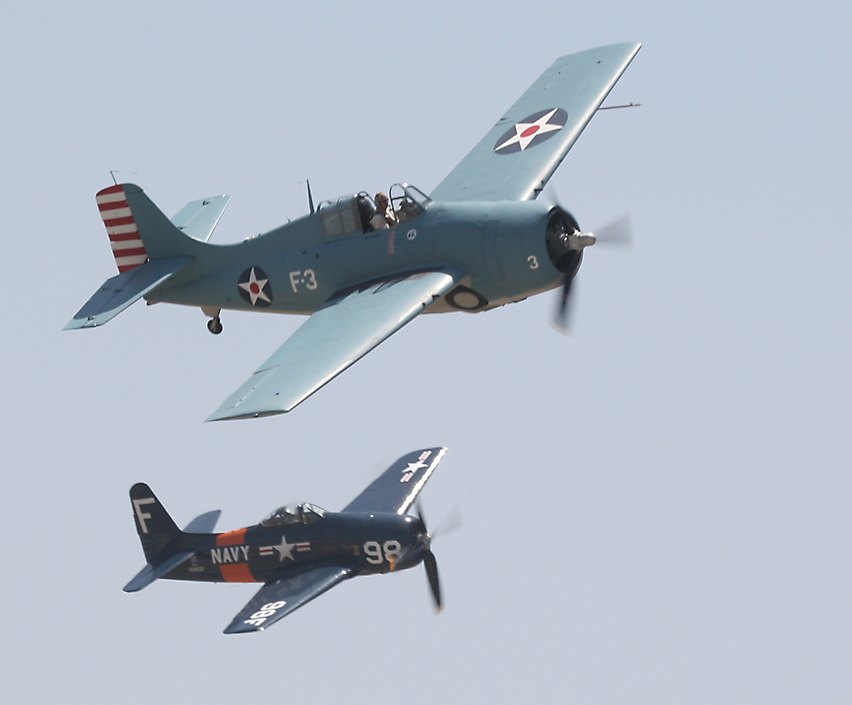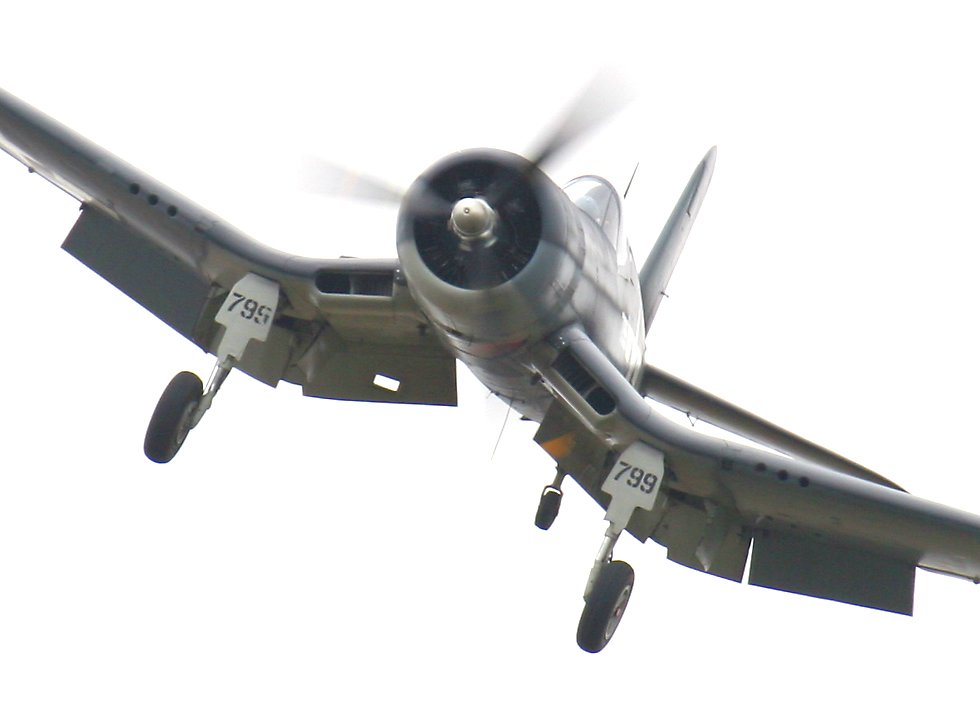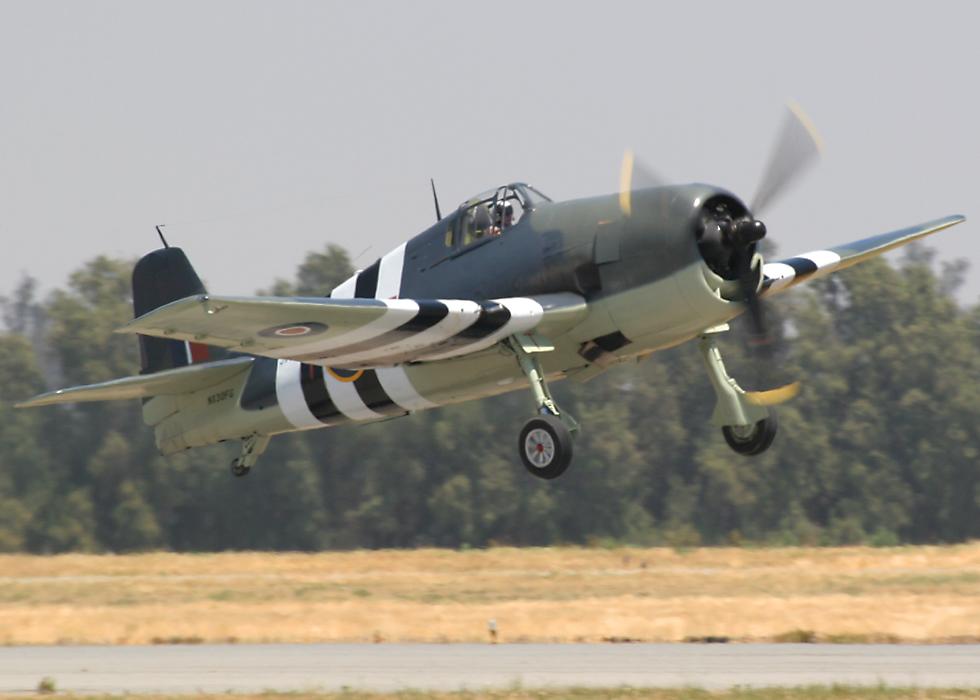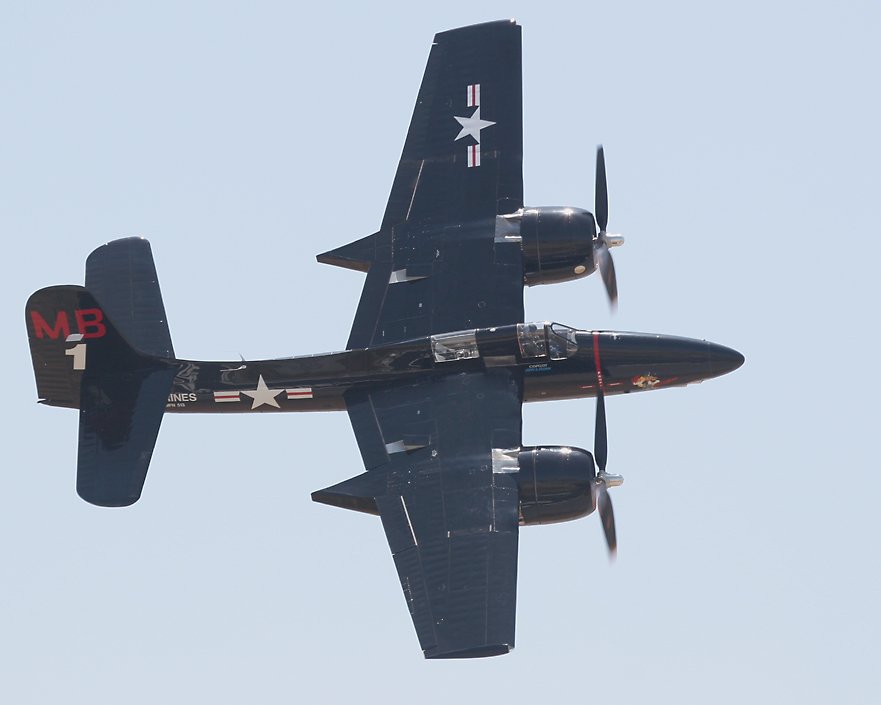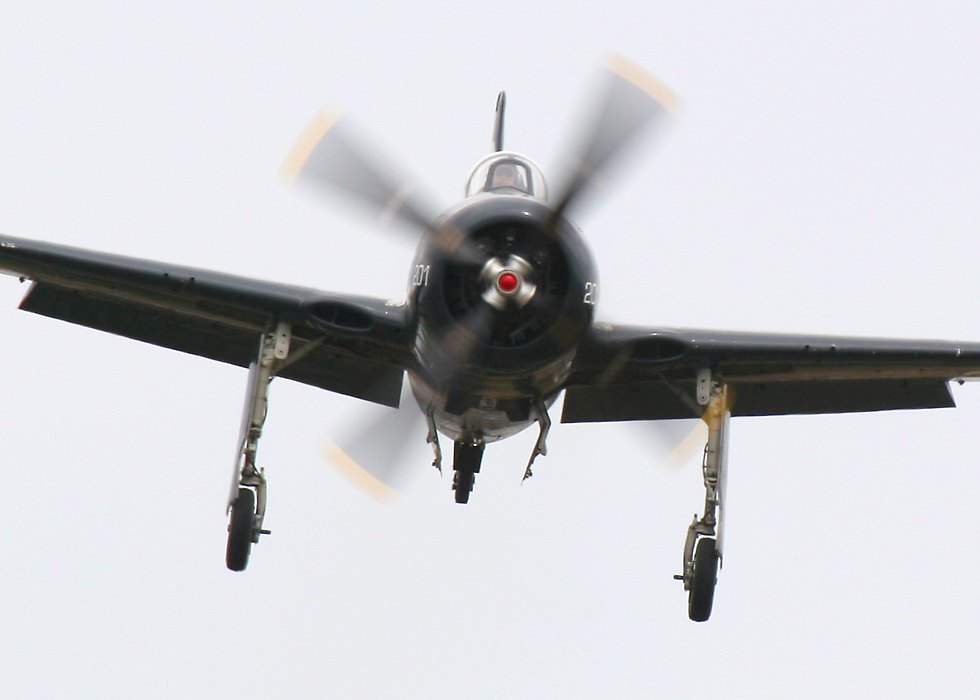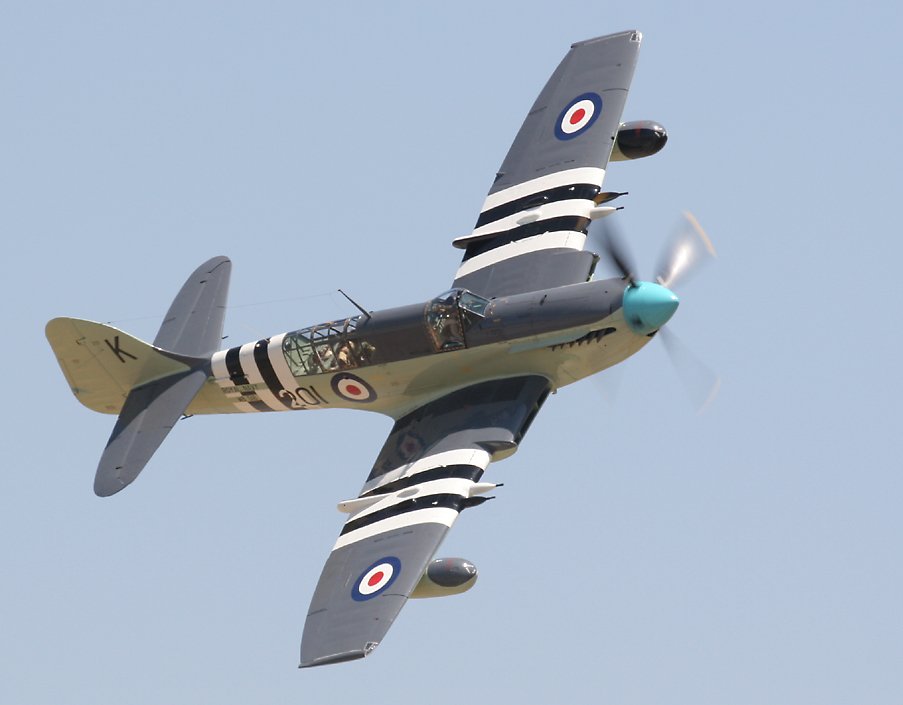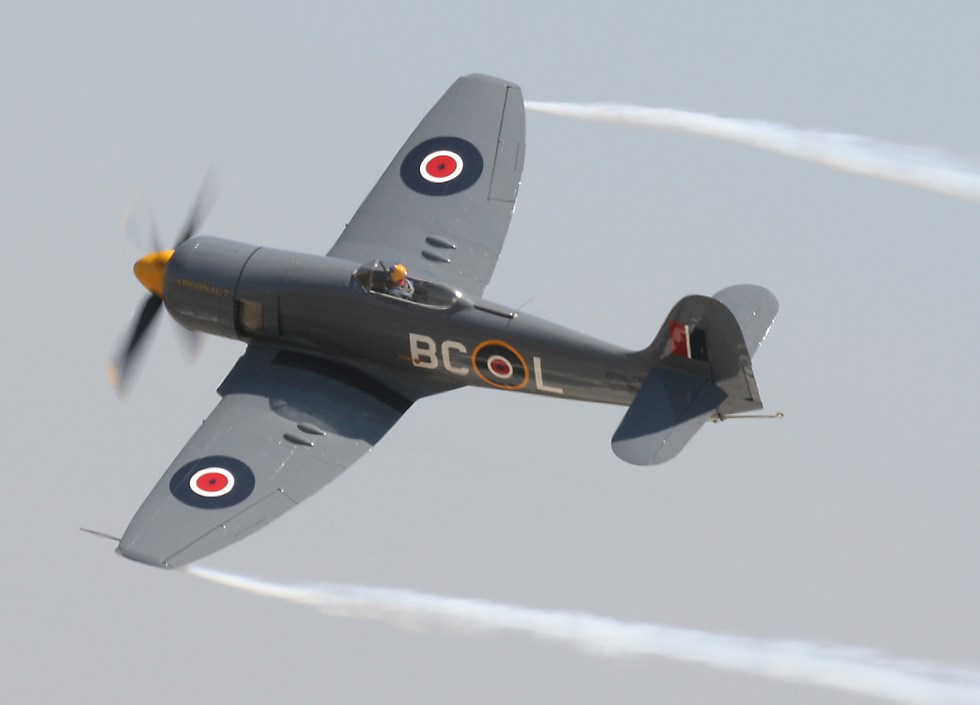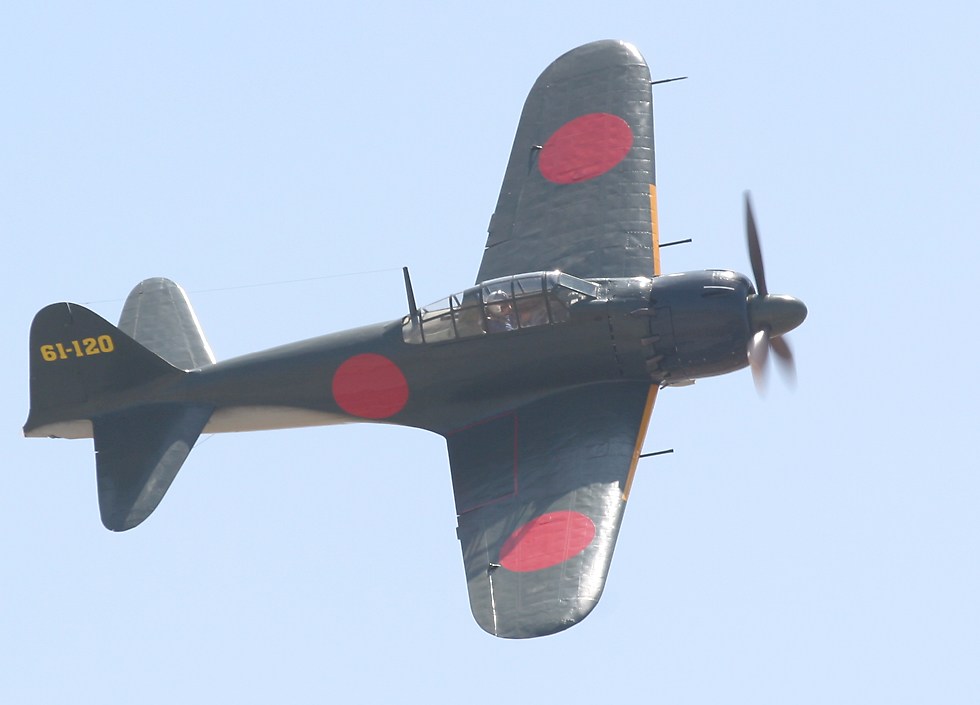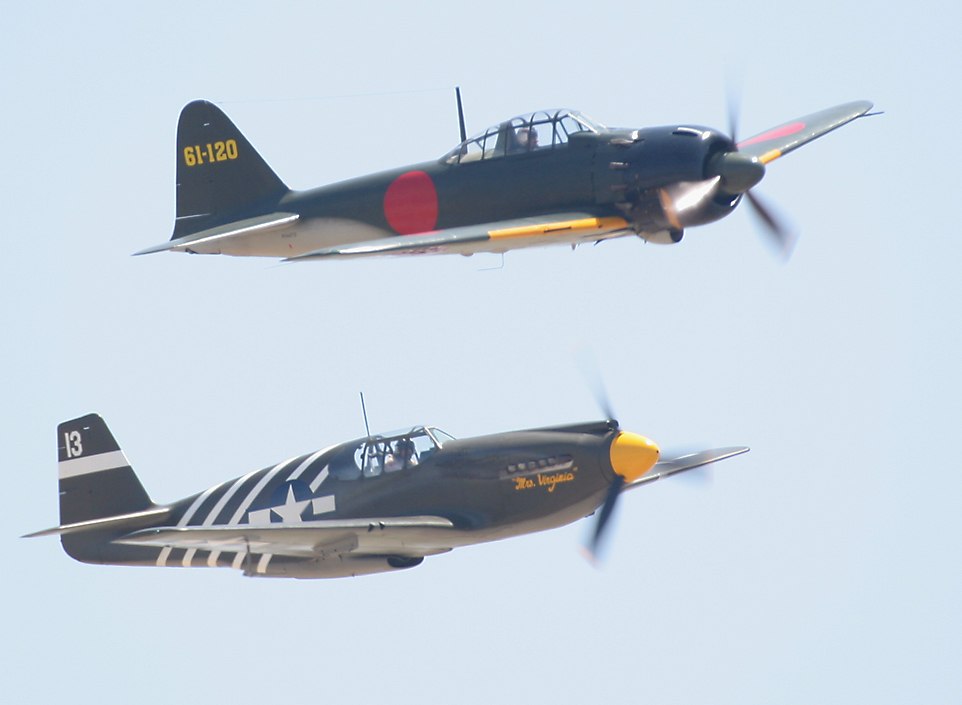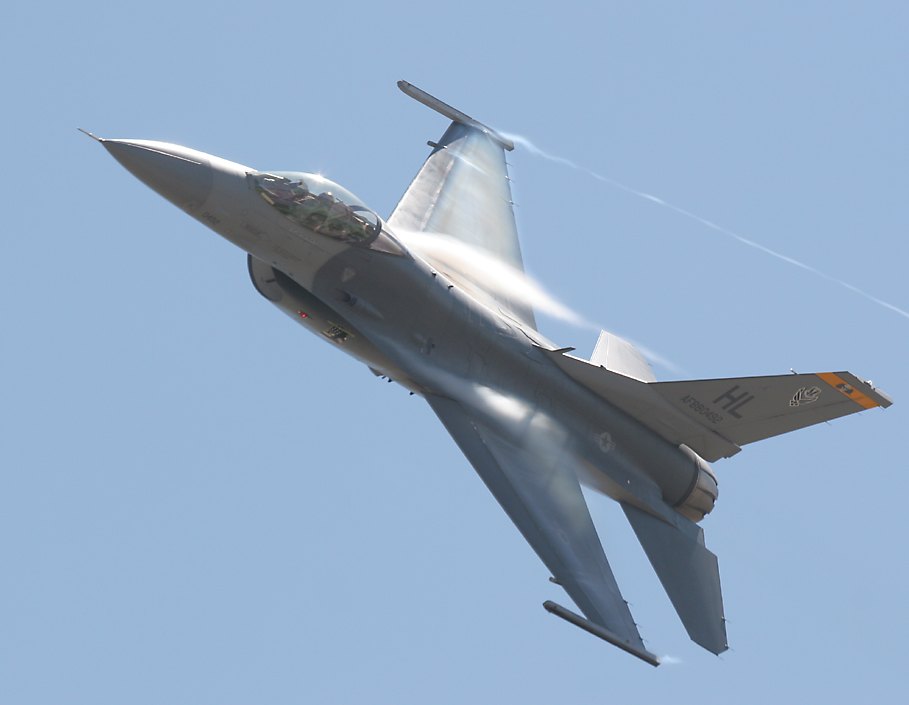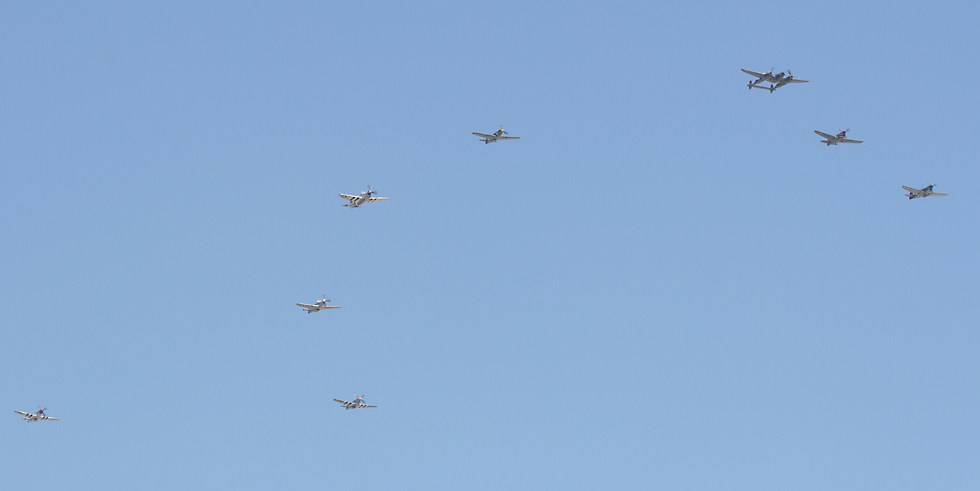Highlights of the 2006 Chino Airshow
|
The Japanese didn't think much of the 2PA, but some P-35s were used against them during the Philippines campaign, so this formation of the AT-12 and the P-26 is quite appropriate. |
 |
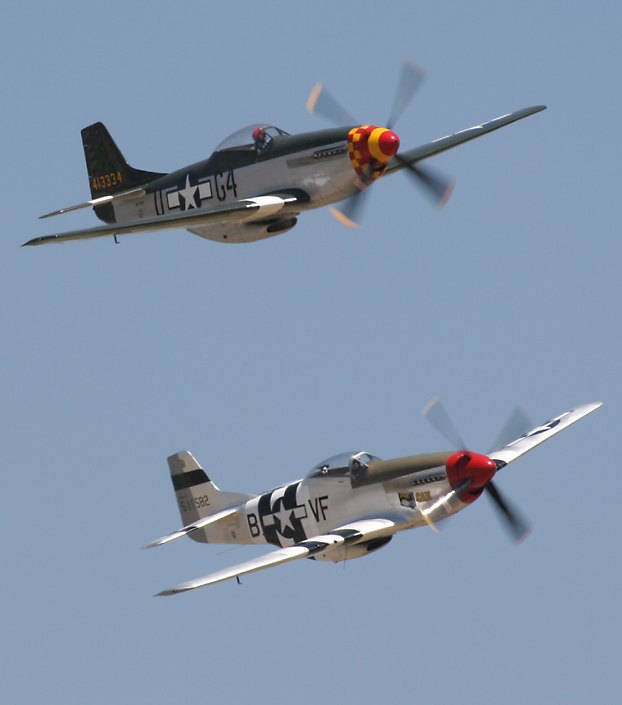
The Allison engine was another major impediment to successful use of the Mustang in Europe, because it didn't perform as well at high altitude as British or German engines in aircraft like the Bf 109 and the FW 190. However the aircraft design was basically sound, and the excellent fuel capacity gave it the range not only to escort bombers to Berlin, but also to travel the long distances required in the war in the Pacific. The British came up with solutions to both problems plaguing the Mustang, first by fitting it with the same Rolls-Royce Merlin engine that powered the Spitfire, and then by modifying some Mustangs with the Malcolm Hood, a bulged canopy which provided better visibility. The new B and C models were therefore all fitted with Merlins, which enabled the Mustang to fight it out with the best of Germany's aircraft, while escorting bombers at high altitude. The British later improved on the Malcolm Hood by coming up with a teardrop shaped canopy, which was trialled on the Hawker Tempest. The two Mustangs you see here are both P-51Ds, the definitive model with both the Merlin engine and a bubble canopy. The high back had to be eliminated, and to improve stability a strake attached to the fuselage was added at the front of the tail. |
|
However it wasn't the only Thunderbolt at the show! Last year there were five flying, but I didn't see them because I was at the Selfridge airshow. This year there were two, the razorback and this more definitive model with the same sort of bubble canopy as the P-51D. Like the P-51D, Thunderbolts fitted with the bubble canopy also have a strake attached to the tail. However, the Thunderbolt is a much larger aircraft than the Mustang, with a maximum takeoff weight 17,500 lbs, compared to the Mustang's 12,100lbs. |
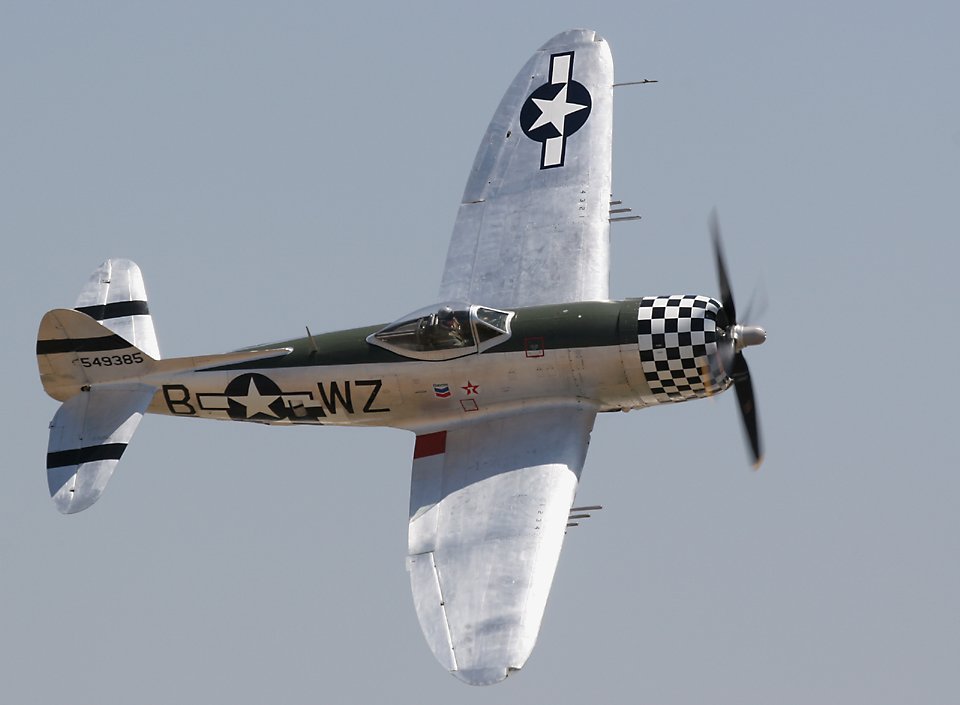 |
|
Although it first flew a few months before the end of hostilities, the A-1 Skyraider is another US navy type which arrived just too late for service in world war two. However its huge ordnance carrying ability, long loiter time and stability as a weapons platform allowed it to thrive well into the jet age, with many serving throughout the Vietnam war in a ground attack role. When it entered service the Skyraider was the largest single seat military aircraft to go into production, though later versions like the AD-5 (later redesignated the A-1E) had a crew of 4 and could even seat an additional 12 passengers in the rear fuselage. The Skyraider's heavy hauling ability also made it the only propeller driven aircraft in the US inventory certified to carry and deliver nuclear weapons. |
 |
|
The Douglas SBD Dauntless dive bomber was America's most powerful weapon in the war against Japan, sinking more ships than all other weapons combined. It did a great deal to turn the tide of the war early on, sinking one Japanese aircraft carrier in the battle of the Coral Sea and four more at the battle of Midway. Although an attempt was made to replace the Dauntless with the SB2C Helldiver, the new aircraft was not as well liked by its crews, and nor was it as successful as its predecessor. |
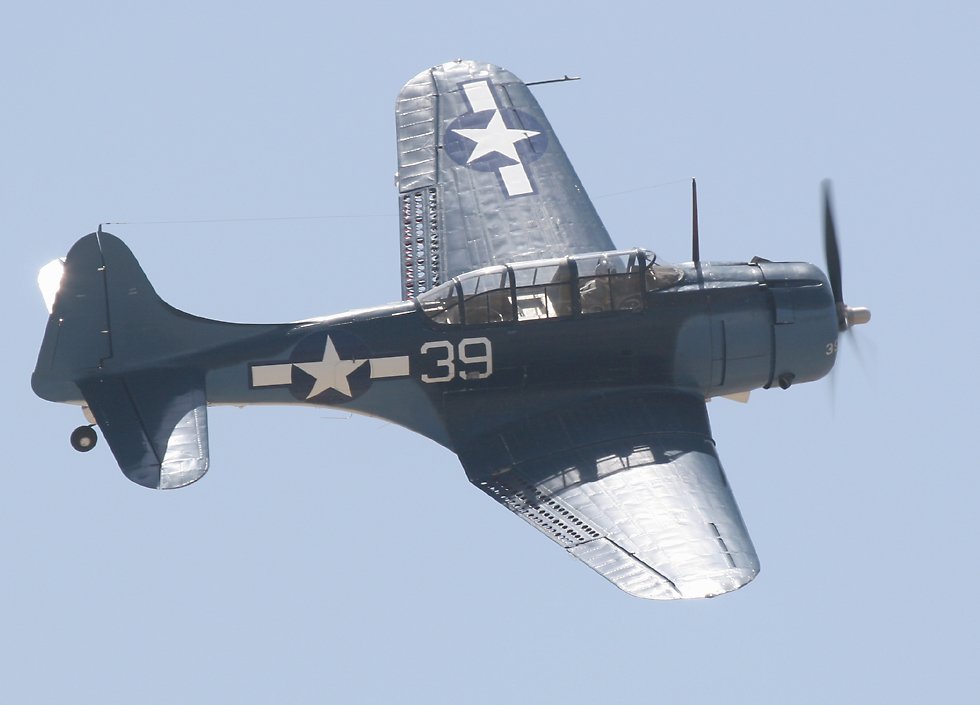 |
|
The Grumman Avenger torpedo bomber received its baptism of fire when it was used for the first time at the battle of Midway. Of the six Avengers that were sent out, only one badly shot-up aircraft returned, with one member of the three man crew dead and another injured. One Avenger pilot who became rather famous after the war was called George Bush, later 41st president of the United States. He was shot down while flying his Avenger over the island of Chichi Jima but was rescued by a submarine. |
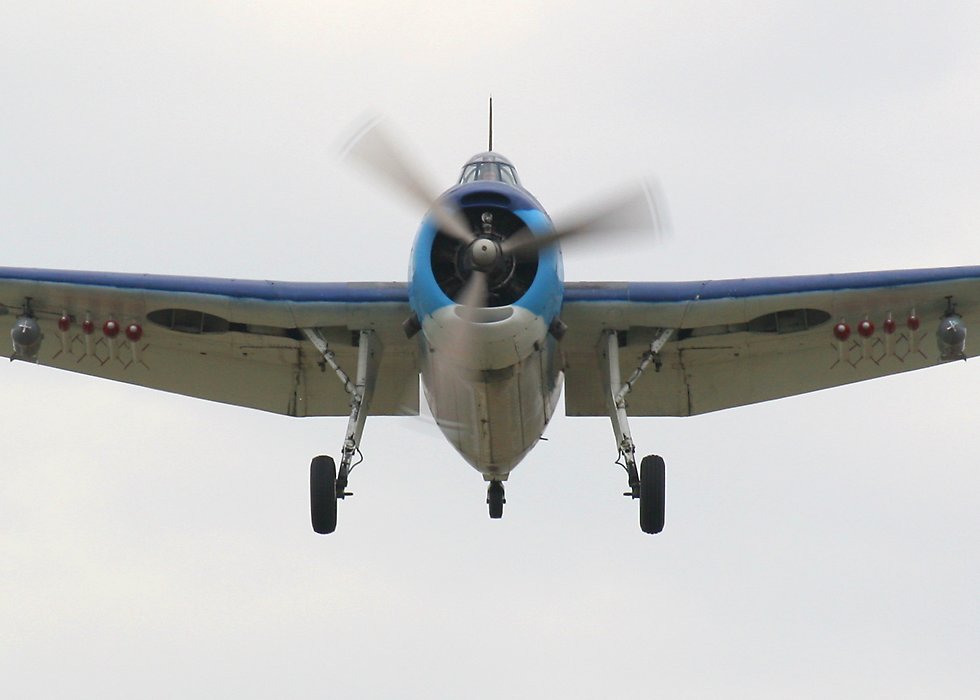 |
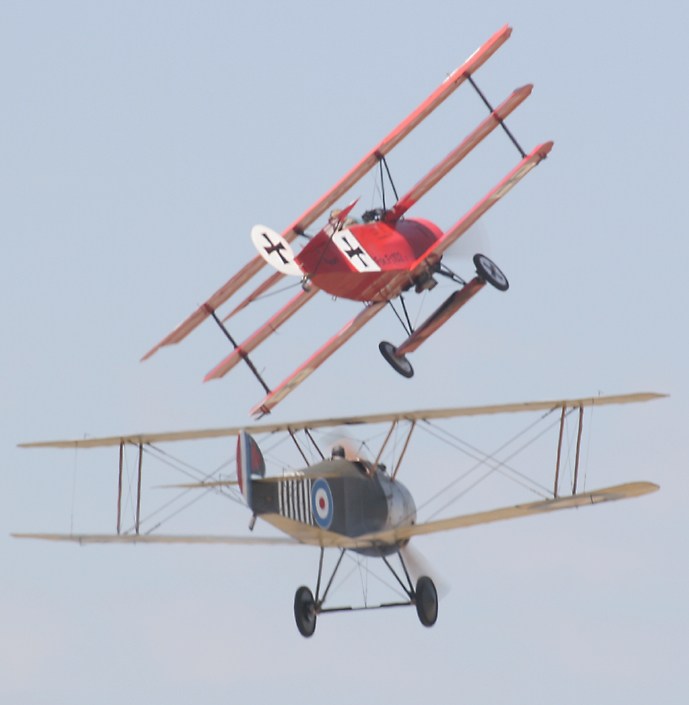
The Chino airshow excels in world war two military types, but other displays were also flown to keep the crowds happy, like this world war one pairing of a British Sopwith Camel fighter in hot pursuit of what was probably the most famous German fighter of the period, the Fokker Dr.1 triplane, painted in the scheme used by the famous Flying Circus commanded by Baron von Richthofen. Actually, though, Richthofen made the great majority of his kills in other aircraft types, and the Germans eventually grounded the Dr.1 after several broke up in mid-air because of structural failure. With only 320 built, no original Fokker triplanes survive. With about 5,500 built the Camel was far more successful than the Fokker, however the Camel was a very nasty plane to fly and killed many of its pilots. Both the Fokker and the Camel had rotary engines, which meant that the propeller was attached to the engine, which spun around while the crankshaft was attached to the fuselage and remained stationary. However this type of engine had a strong gyroscopic effect on the aircraft, making it turn sharply to the right with a nose down attitude, but also making it turn only slowly to the left with a nose up attitude - and even when turning right the pilot had to use left rudder to counteract the plane's natural tendencies. When flying level the Camel was noticeably tail heavy, and if it stalled then it immediately entered a spin which it was exceptionally difficult to get out of. Rotary engined aircraft like these had no throttles, so pilots had to "blip" their engines in order to reduce speed enough for a safe landing. The two aircraft at the show demonstrated this technique while they were circling around, cutting and restarting the engines over and over. |
